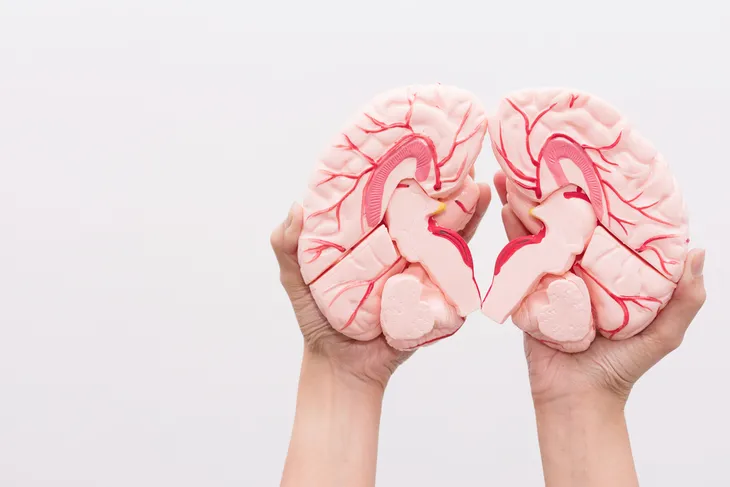The annual pattern of winter depression and melancholy – better known as seasonal affective disorder, or SAD – suggests a strong link between your mood and the amount of light you get during the day.
To put it simply: The less light exposure one has, the more one’s mood may decline.
Wintertime blues are common, but about 10 million Americans are affected every year by a longer lasting depression called seasonal affective disorder. Along with low mood, symptoms include anxious feelings, low self-esteem, longer sleep duration, constant craving for carbohydrates and low physical activity levels.
I am a nutritional neuroscientist, and my research focuses on the effects of diet and lifestyle factors on mood and brain functions such as mental distress, resilience and motivation.
Through my research, I have learned that seasonal affective disorder can strike anyone. However, people with a history of mood disorders are at a higher risk. In particular, young adults and women of all ages have an increased susceptibility.
Why seasonal depression happens
When daylight saving time ends each fall, the one-hour shift backward reduces the amount of light exposure most people receive in a 24-hour cycle. As the days get shorter, people can experience general moodiness or a longer-term depression that is tied to a shorter exposure to daylight.
This happens due to a misalignment between the sleep-wake cycle, eating schedules and other daily tasks. Research shows that this mismatch may be associated with poor mental health outcomes, such as anxiety and depression.
Our sleep-wake cycle is controlled by the circadian rhythm, an internal clock regulated by light and darkness. Like a regular clock, it resets nearly every 24 hours and controls metabolism, growth and hormone release.
When our brain receives signals of limited daylight, it releases the hormone melatonin to support sleep – even though we still have hours left before the typical bedtime. This can then affect how much energy we have, and when and how much we eat. It can also alter the brain’s ability to adapt to changes in environment. This process, called neuronal plasticity, involves the growth and organization of neural networks. This is crucial for brain repair, maintenance and overall function.
It is possible to readjust the circadian rhythm to better align with the new light and dark schedule. This means getting daylight exposure as soon as possible upon waking up, as well as maintaining sleep, exercise and eating routines that are more in sync with your routine prior to the time change. Eventually, people can gradually transition into the new schedule.
The intimate connection between serotonin and melatonin
Serotonin is a chemical messenger in the brain that is a key player in regulating several functions such as mood, appetite and the circadian rhythm. Serotonin also converts to melatonin with lower light intensity. As mentioned above, melatonin is a hormone that regulates the sleep-wake cycle and signals the brain that it’s time to sleep.
Less daylight exposure during winter months leads to the conversion of serotonin into melatonin earlier in the evening, since it gets dark earlier. As a result, this untimely melatonin release causes a disruption in the sleep-wake cycle. For some people this can cause moodiness, daytime sleepiness and loss of appetite regulation, typically leading to unhealthy snacking. People with seasonal affective disorder often crave foods rich in simple sugars, such as sweets, because there is an intimate connection between carbohydrate consumption, appetite regulation and sleep.
Strategies to combat the winter blues
In winter, most people leave work when it’s turning dark. For this reason, light therapy is typically recommended for those who experience seasonal affective disorder, or even shorter periods of seasonal funk.
This can be as simple as getting some light shortly after awakening. Try to get at least one hour of natural light during the early morning hours, preferably about one hour after your usual morning wake-up time when the circadian clock is most sensitive to light. This is true no matter what your wake-up time is, as long as it’s morning. For people living at northern latitudes where there’s very little sun in winter, light therapy boxes – which replicate outdoor light – can be effective.
You can also improve your sleep quality by avoiding stimulants like coffee, tea or heavy meals close to bedtime. Exercising during the day is also good – it increases serotonin production and supports circadian regulation. A balanced diet of complex carbs and healthy proteins supports steady serotonin and melatonin production, and practicing downtime before bed can reduce stress.
Taking these small steps may help the circadian rhythm adjust faster. For the millions with mood disorders, that could mean happier times during what are literally the darkest days.
Lina Begdache, Associate Professor of Health and Wellness Studies, Binghamton University, State University of New York
![]()
This article is republished from The Conversation under a Creative Commons license. Read the original article.






